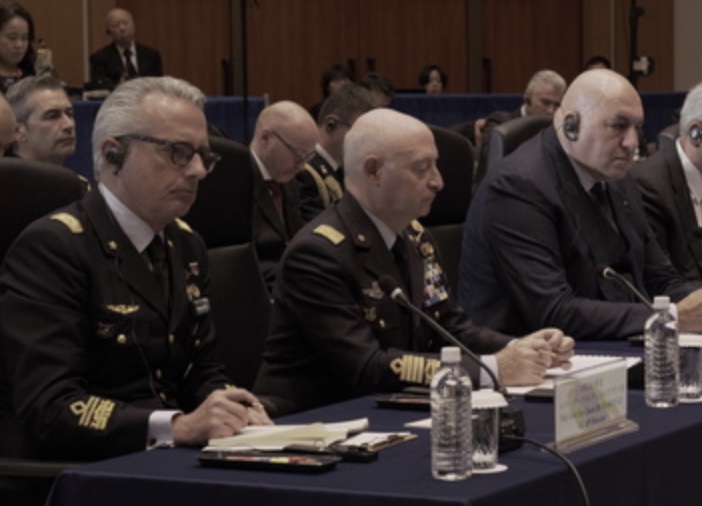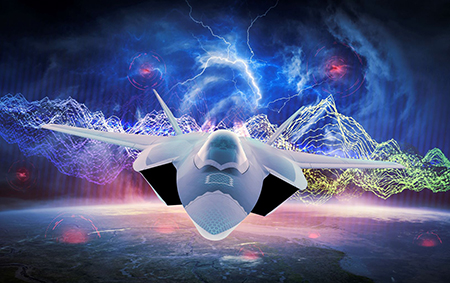With a final act a few hours ago in Japan between Italy, England and Japan, the construction and development of the sixth generation aircraft which should be delivered to the armed forces by 2035 is finally underway. The season of sixth generation aircraft is thus coming to life, flying at supersonic speeds with futuristic weapons (laser and electromagnetic), stealth total and interoperability in all domains, from traditional to emerging ones (space, cyber, underwater).
by Andrea Pinto
The agreement on Global Combat Air Program (Gcap) announced a few hours ago in Tokyo represents an important step forward in cooperation between Italy, Japan and the United Kingdom in the field of development and construction of a sixth generation supersonic fighter. The Italian Minister of Defense, Guido Crosetto, underlined the importance of this collaboration in an international context characterized by aggressive actors, growing instability, competition between states and rapid technological changes.

Crosetto highlighted that the Gcap initiative is vital to stay one step ahead of evolving threats and underlined the importance of maintaining strong relations based on common values such as democracy, freedom, respect for human rights and the rule of law. The agreement not only aims to develop a fighter of the future, but also to further strengthen ties between the three nations in the fields of defense and security. Furthermore, the minister expressed his desire to intensify and further develop collaboration through the Gcap, indicating that this project represents a strong and positive message for the rest of the world regarding the solidity of the partnerships between the nations involved. The trilateral meeting between the defense ministers of Italy, Japan and the United Kingdom marks a joint commitment to address global challenges and maintain a leading role in international security.

The Gcap program
The ambitious project Italian-English-Japanese, by 2035, it aims to replace the current Eurofighter, F2 and F16. The aircraft is not a simple fighter but the in-flight synthesis of various multi-domain technologies capable of controlling swarms of armed drones from above, or of conducting powerful cyber attacks and much, much more. In the Gcap studies and projects elaborated for the Tempest in the United Kingdom and the Japanese ones for the FX will co-flow. The US Air Force also gave a nod to the program, which in its "Next generation air dominance” could open to future collaborations. At the moment the United States has two projects: the “Penetrating Counter-Air”Of the Air Force - a long-range stealth fighter to escort stealth bombers - and the FA-XX of the Navy. So far only Boeing, Lockheed-Martin and Northrop-Grumman have unveiled sixth generation concepts to the world.
Italian participation as first player the Gcap will allow the Italian defense industry to take a further step forward, thus establishing itself in a privileged position among the international industries in the sector.
In England Leonardo for the Tempest program it is present with various companies and the people who will work on the program over the next 25 years will reach 20 thousand units, considering the employees of Mitsubishi Electric, Mitsubishi Heavy Industries e Hey in Japan, Leonardo, Avio Aero, Electronics ed MBDA Italy.
The Tempest is a British program, financed with Defense funds for the development of new technologies entrusted to a team of companies in which it plays an important role Leonardo, which has 7 factories in the UK. Those in Edinburgh and Luton will be most involved in the Tempest programme. Bae Systems will take care of the development of the airframe and the aircraft as such, Rolls Royce of the engine and MBDA of onboard armaments (missiles but also lasers) and Leonardo will have an exclusive role in the sector of onboard electronic systems.
Italy has been following the Tempest program for years, in stark contrast to the Franco-German-Spanish one called FCAS although recently Germany has shown particular interest in the trilateral Gcap program.
But what are the criteria, thought up, for the sixth generation?
The goal is autonomous flight, that is to design a machine not managed by people on board but by remote pilots, a tactical evolution of the current Apr aircraft. The study would include an American version without pilot and another Russian with edge.
American designers are working on a prototype capable of managing a disproportionate number of information with incredible resistance to overloads and to do this only a robot will be able to guarantee this ability. The Russians, however, believe that no computer can make a machine work like a human.
Another feature of these aircraft of the future is the low visibility. Today, fifth generation stealth, it seems, is not totally immune to Russian S-400 air defense systems. Those of the sixth generation will have to be completely invisible.
The next criterion is the speed. Today the fastest military aircraft in flight goes at around Mach 3, the development of the sixth generation should be able to exceed the Mach 5 threshold, thus opening the season of supersonic flights. Most likely, the cruise speed of the future will be identical to today's post-combustion speed – Mach 1,5-2. The aircraft will be able to fly without refueling for a long time, and therefore continue to patrol large distances far from its base.
From a structural point of view, experts believe that the aircraft will be very ergonomic. Credible example is a wing enclosed in the fuselage and will not be equipped with a vertical tail surface. Perhaps at the basis of aircraft design is the concept of “flying wing” (like the futuristic B-2, of the US Air Force).
The aircraft should be easy to maneuver in angles of approximately 60 degrees. The maneuverability allows the fighters to move within the framework of the "missile defense" trajectories. The aircraft with very high maneuverability will not have to fear any missile defense.
Interoperability must be total with forces on land, sea, air, aerospace, space, cyberspace and even underwater. The myriad of information received from the various command and control centers will have to allow the sixth generation aircraft absolute dominion of the skies.
The armaments will be supplemented by laser beams. Probably the last machines will be equipped not only with missiles, which are mainly used today, but also with laser systems. It is possible that the weapon will also be of the electromagnetic or hypersonic type with variable trajectory and will fly at such a speed that the air defense system will not be able to keep up with them.
Subscribe to our newsletter!
